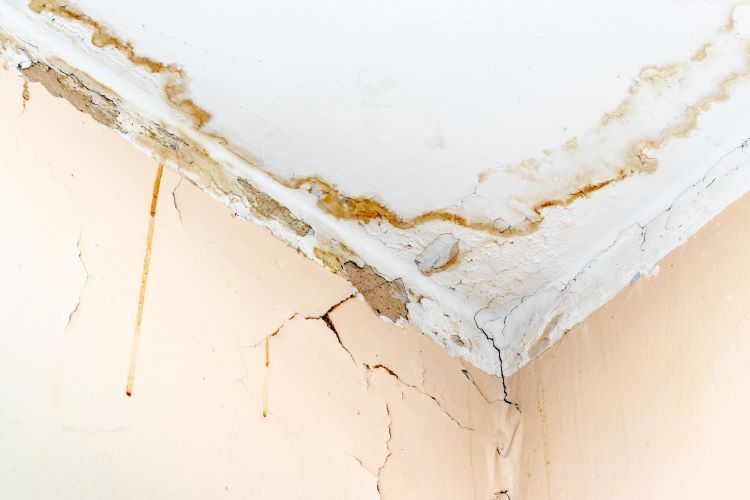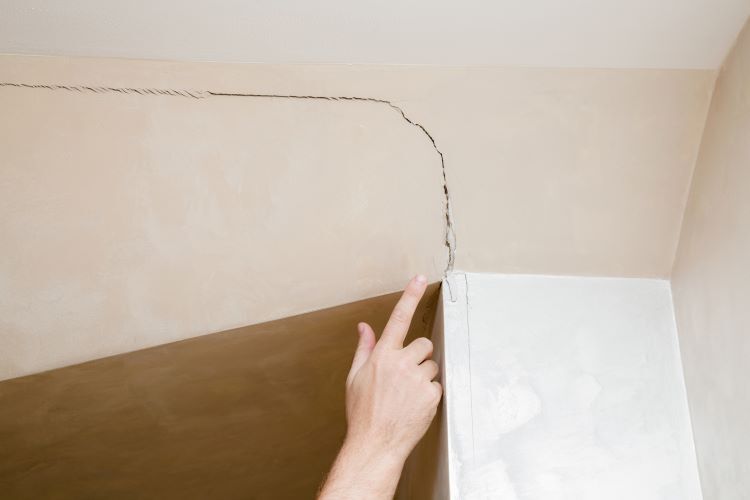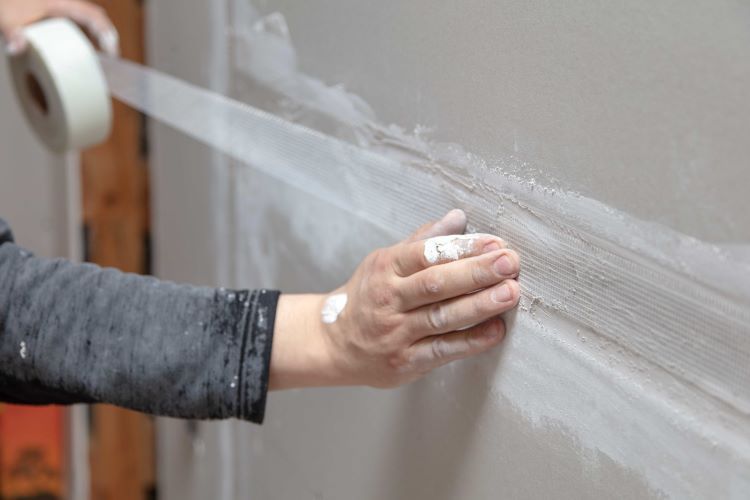The Impact of Water Damage on Drywall and Ceiling Integrity

Water damage is one of the most significant threats to the structural integrity of your home, especially when it comes to drywall and ceilings. These essential components of your home’s construction are highly susceptible to moisture, and when compromised, they can lead to costly repairs, health risks, and long-term issues. In this article, we’ll explore how water damage affects drywall and ceilings and provide tips on how to identify, prevent, and address these problems.
Why Drywall and Ceilings are Vulnerable to Water Damage
Drywall is a commonly used material for interior walls and ceilings because of its affordability, ease of installation, and smooth finish. However, it is not water-resistant. Drywall is made of gypsum, which absorbs moisture quickly. This can cause the material to weaken, swell, or even crumble if exposed to prolonged moisture.
Ceilings, especially those made from drywall, are just as vulnerable as the walls. When water damage occurs, the weight of the absorbed water can cause the ceiling to sag or collapse, posing a serious safety risk to homeowners.
Common Causes of Water Damage in Drywall and Ceilings
Water damage can result from several factors, including:
- Plumbing Leaks: Hidden leaks behind walls or in ceilings from broken pipes, faulty plumbing, or dripping faucets are common causes of water damage in drywall.
- Roof Leaks: A leaky roof can allow water to seep into your ceiling and walls, causing extensive damage, especially during heavy rainfall or after snow melts.
- Burst Pipes: A sudden pipe burst can release large amounts of water, quickly saturating drywall and ceilings.
- Flooding: Whether due to natural disasters or household accidents, flooding can wreak havoc on drywall and ceilings if not addressed immediately.
- Condensation: Poor ventilation in areas like bathrooms, kitchens, or basements can lead to condensation buildup, which can damage ceilings and walls over time.
The Dangers of Ignoring Water Damage
When left unchecked, water damage can cause serious issues with your drywall and ceiling integrity. Here are some of the dangers:
- Structural Weakness: When drywall absorbs too much water, it loses its strength, becomes soft, and may start to crumble. This compromises the structural integrity of the affected area, leading to sagging ceilings, collapsing walls, and a potential safety hazard.
- Mold Growth: Moisture trapped in drywall creates the perfect environment for mold and mildew growth. This not only damages your home but also poses significant health risks, including respiratory problems and allergic reactions.
- Aesthetic Damage: Water damage often results in unsightly stains, discoloration, and warping on walls and ceilings. It can ruin the overall appearance of a room, requiring significant restoration work to restore the space’s aesthetic appeal.
- Expensive Repairs: What may start as a minor leak can quickly turn into a costly repair job if left unattended. Sagging ceilings and deteriorating drywall will require extensive labor and materials to fix, driving up repair costs.
Signs of Water Damage in Drywall and Ceilings
Early detection is key to minimizing damage and repair costs. Here are some signs that you may have water damage in your drywall or ceiling:
- Discoloration: Yellow or brown stains on your ceiling or walls are a clear indication of water damage. These stains are often found in areas directly below plumbing lines or roofing.
- Sagging: A ceiling or wall that appears to be sagging or bulging is likely saturated with water and may be at risk of collapse.
- Peeling Paint or Wallpaper: If paint or wallpaper starts to bubble, peel, or crack, this can indicate moisture behind the drywall.
- Musty Odor: A persistent musty smell in a room, even if you can’t see the water damage, is often a sign of mold or mildew growing behind the walls or ceiling.
How to Address Water Damage in Drywall and Ceilings
Once you’ve identified water damage, it’s important to take action quickly to prevent further damage:
- Stop the Source of the Water: First and foremost, identify and stop the source of the water intrusion. This could mean repairing a leaking pipe, fixing the roof, or improving ventilation in moisture-prone areas.
- Assess the Damage: Depending on the extent of the damage, you may need to remove and replace the affected drywall or ceiling material. If the damage is minor, professional drying techniques may be sufficient to salvage the area.
- Dry Out the Area: Use fans, dehumidifiers, and proper ventilation to dry out the damaged area thoroughly before making repairs. Failing to dry the area properly can lead to mold growth.
- Repair or Replace the Drywall/Ceiling: For minor damage, drywall patches or ceiling repairs may be enough. However, for extensive damage, you’ll likely need to replace entire sections of drywall or ceiling to ensure structural integrity.
- Consider Waterproof Drywall: In areas that are prone to moisture, such as basements, bathrooms, and kitchens, consider using moisture-resistant drywall (also known as green board or purple board) to provide added protection against future water damage.
Preventing Future Water Damage
Once you’ve repaired the damage, it’s crucial to take steps to prevent it from happening again. Here are some tips to safeguard your drywall and ceilings from water damage:
- Regular Roof Inspections: Make sure your roof is in good condition and check for any signs of damage or leaks, especially after storms.
- Maintain Plumbing: Regularly inspect your home’s plumbing for any leaks or signs of wear and tear. Address any issues promptly.
- Install Proper Ventilation: Ensure that areas prone to humidity, such as bathrooms and kitchens, are well-ventilated to prevent condensation buildup.
- Monitor Humidity Levels: Use a dehumidifier in areas like basements to keep moisture levels in check.
Conclusion
Water damage can severely affect the integrity of your drywall and ceilings, leading to structural problems, mold growth, and costly repairs. By understanding the risks and taking prompt action, you can protect your home and avoid further damage. If you suspect water damage in your home, don’t wait—contact Calgary Drywallers for expert assessment and repair services. We’ll help you restore your home’s structural integrity and keep it safe from future water damage.
You might also like


